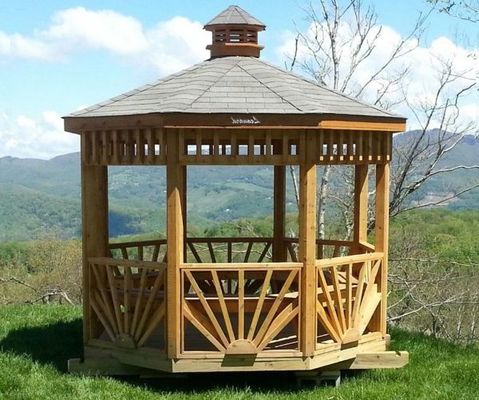Octagonal Gazebo Blueprints
10 Feet Gazebo Assembly Diagrams - Unearth Practical Strategies For Making A Pergola Promptly

The fewer the knots and other defects, the more expensive a board or length of dimension lumber. Time to take this knotted weed farm and make it awesome. Add-on mosquito curtains or outdoor curtains could be used for a summerhouse that is sold without curtains. The results were astounding and you may even be able to reproduce the results on your own with some perseverance. Get the job done with a jigsaw and then smooth the edges (https://www.squaregazeboplans.com/gazebo-construction-plans) for a neat result. Next, install the last four spanning joists. Position in a cool, shaded area of your backyard, preferably next to trees or foliage.
Also cut 45-degree angled blocks for the corners. Level the timbers if necessary by adding or removing gravel. You can also consider using wood chips or gravel as a floor or even pour a concrete slab underneath. Select plants according to your soil, climate and sun exposures. Screw the columns into the floor by toe-nailing 3-inch deck screws. From here you could begin installing the ridge girders from the corners of the header beam to each flat surface of the hub. Set the stair jig on top of a 2-by-12-inch board cut to stringer length. Drill pilot holes and secure the joists to the core block.
After a few failed attempts at making this work, we decided the scrap the idea. Add style and protection (next page) from the sun to your outdoor living space. Take your time, and make sure your posts would line up right and be square to each other. You also don't have to mess with frost footings. Cut both ends of the bottom struts at 30 degrees, using a miter saw. Ask a skilled friend to assist you while securing the beams to the posts. You can either make pressure treated summerhouses by buying pressure treated timber right from the start. Push the boards together so there aren't any gaps between courses.
Procesando video...
Also there are many online stores for gazebo. Once you're sure these two pattern struts are correctly cut, mark them as patterns and mark and cut the necessary number of rafters. Cut the 2 x 12 with your reciprocating saw and jig saw. Each stick was cut at a 45 degree angle on the very end to tie into the angles of the overall design of the patio pergola. Skips are the best place for finding materials. Make sure you take a look over the local building codes, so you comply with the regulations. As pergolas spend their time outside and are exposed to all of the elements, their lifespan would vary based on the material used.
Rip the last board to fit, trim the butt ends and then finish with the last two perimeter boards. Finally, the top stringer planks go on, and screws are driven down into the purlins to lock it all together. Investing in cedar or other weather resistant lumber is a good idea, as it would pay off on the long run. Clean the recesses with a chisel and smooth the surface with sandpaper. Brace the pergola posts temporarily so they are plumb. Lay the deck planks perpendicular to the joists. You will probably need a ladder or saw stool to do this.
After the corner girders are attached, fasten the six middle girders in place. Gazebo spa enclosures are perfect for covering your hot tub and blocking out those annoying mosquitos. Simply cut one end of a 2 x 6 at a 45 degree angle, at your desired length, for us that was 4 feet in length. Set the post hole auger in place at each mark and dig a hole 30 inches deep. Use these tips to help make your building process smoother and more enjoyable, and start getting more out of your yard this summer. You can make all the decorative parts in your garage or shop.
They can also display a unique architectural style and be the center of all your outdoor leisure activities. To mitigate this, the column offsets must be measured from a reference point and all measured and cut accordingly. Each piece of deck planking is fastened between adjacent main joists. This is best practice with any deck project. This will ensure the rest of the project would be square to the posts. Since you start in the center and work out, you'll have to disrupt that flat sand layer with a few footprints. There isn't really a right or wrong answer here, you need to work with whatever suits you best, even if it requires a little bit more maintenance.